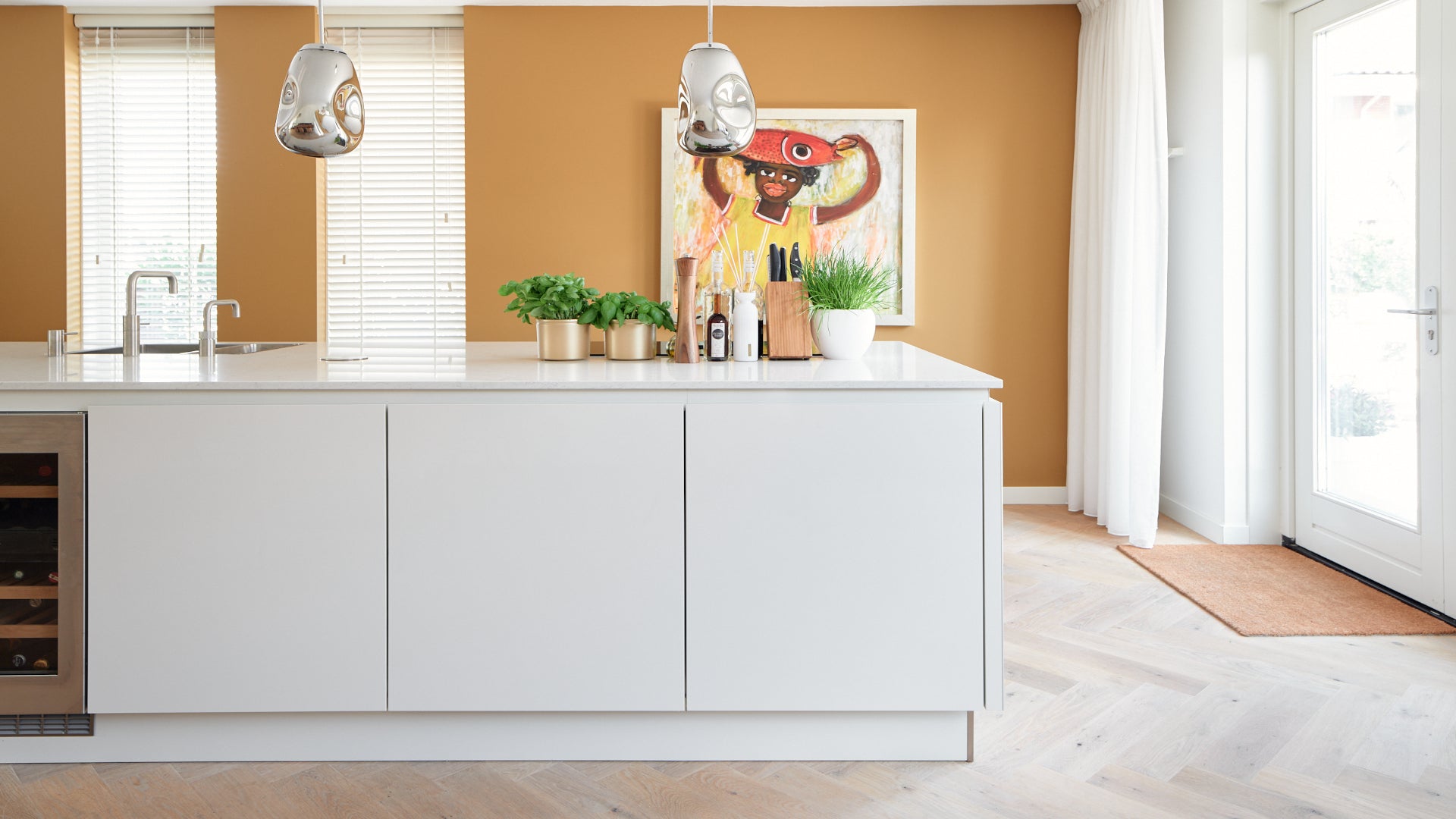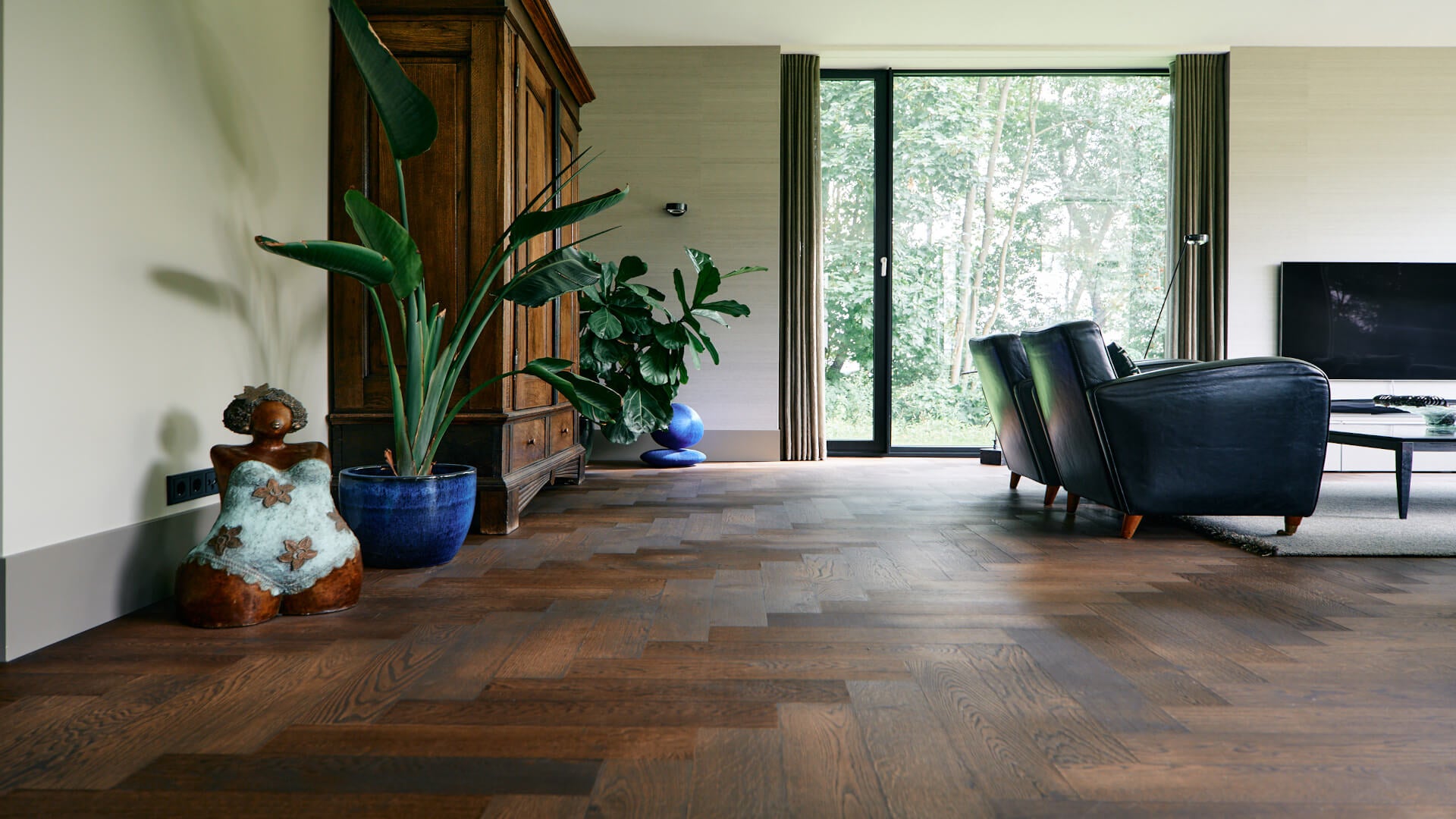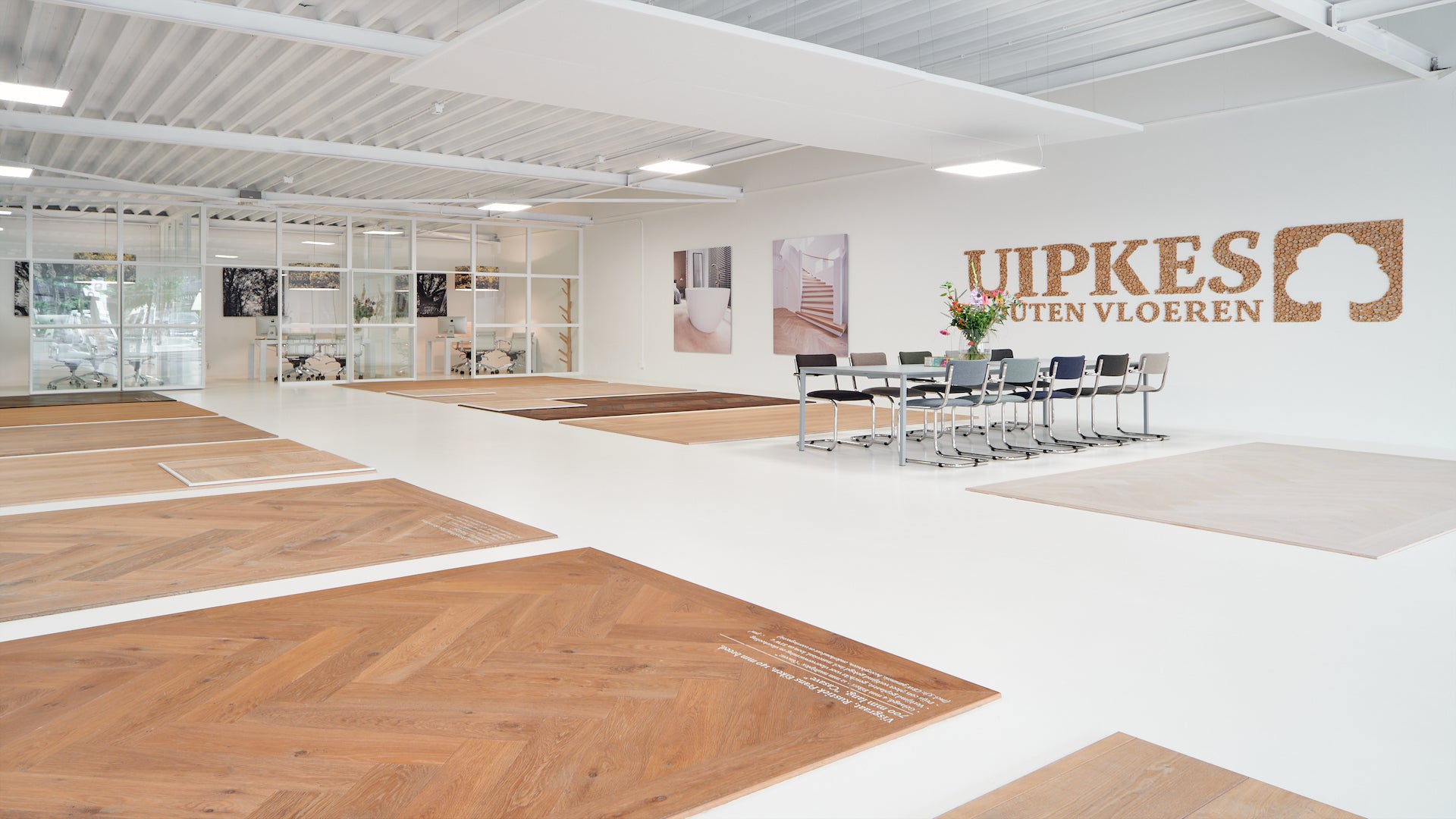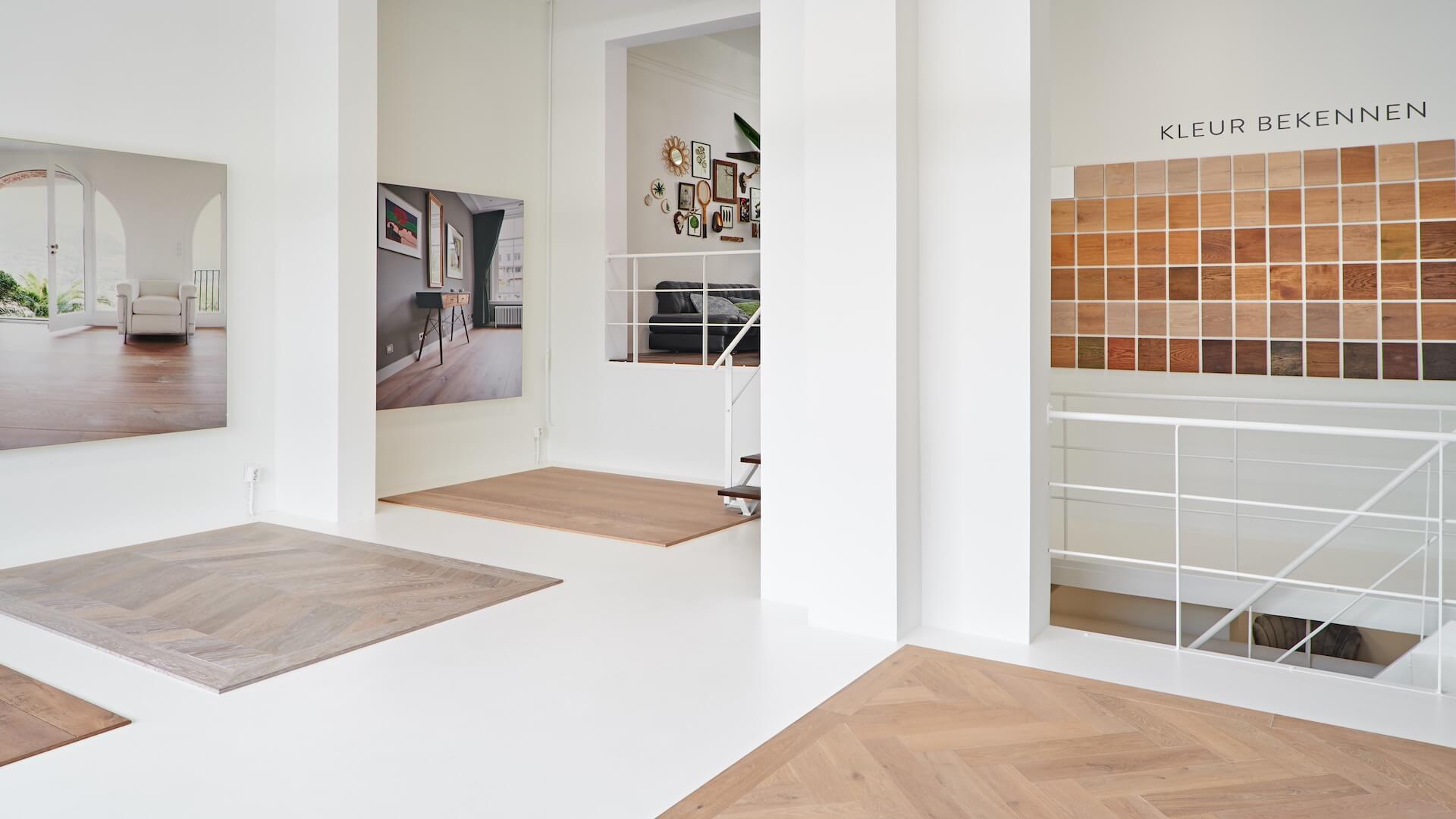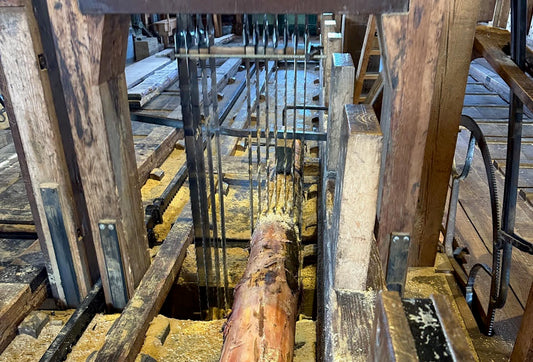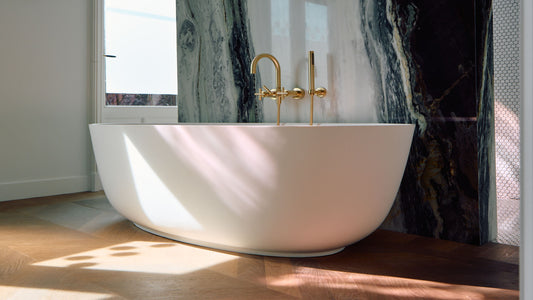Voordelen en nadelen van elektrische vloerverwarming in de badkamer, keuken of woonkamer
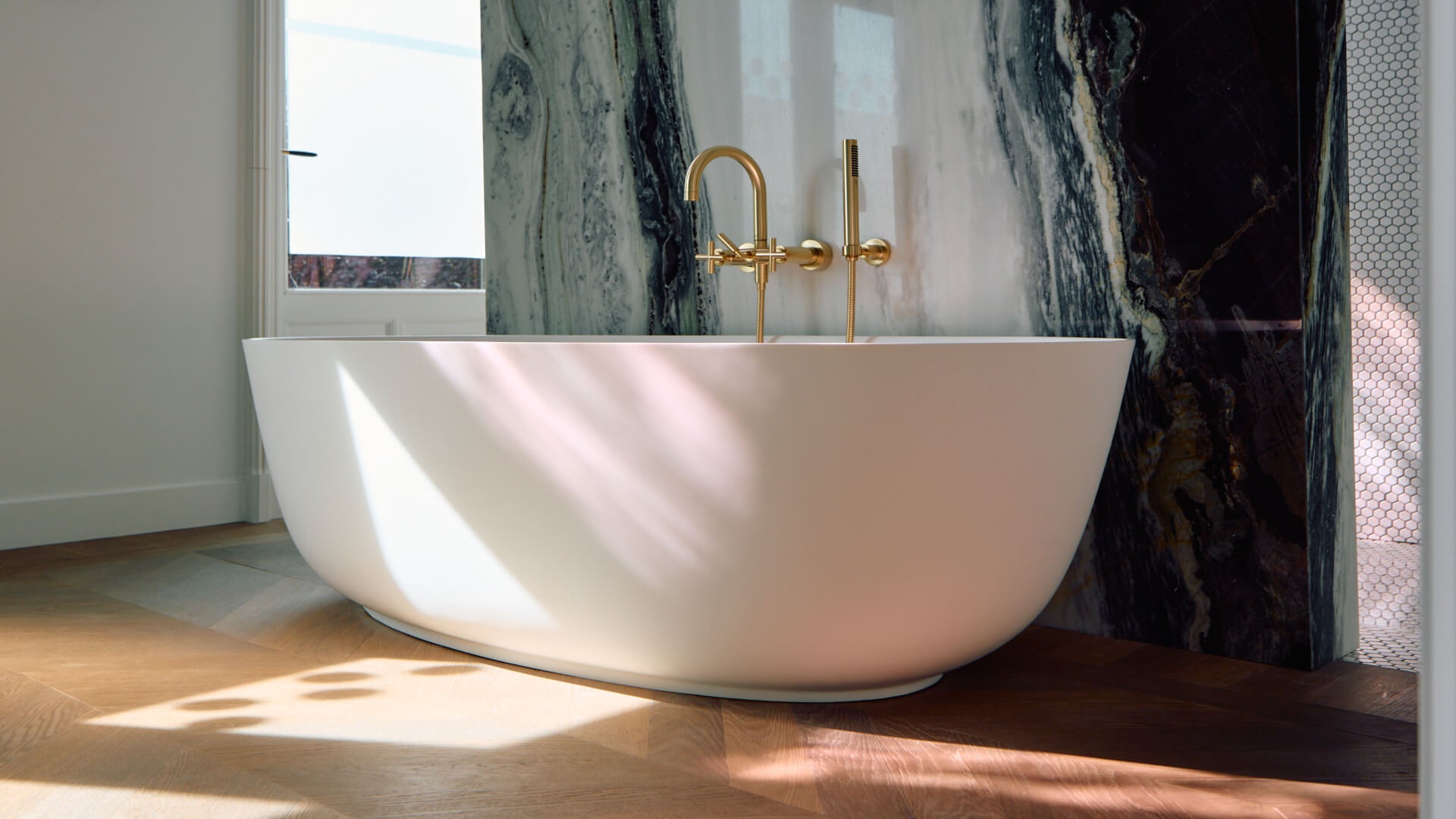
Datum: 03 april 2024
Leestijd: 8 minuten
Auteur: Uipkes Houten Vloeren
Electric underfloor heating is a modern and efficient way to heat your home. Unlike traditional radiators that distribute heat via convection, electric underfloor heating provides an even heat output from the floor, creating a comfortable and pleasant environment in your home. In this article we will explore what electric underfloor heating exactly is and how it works.
Kom Langs In
What is electric underfloor heating ?
Electric underfloor heating is a heating system that uses electrical cables or heating mats installed under the floor to generate heat. These cables or mats are usually placed under tiles, laminate, wooden floors or even carpet. When the system is turned on, electricity flows through the cables, causing them to heat up and release heat to the floor above.
The heated surface of the floor then radiates heat to the rest of the room, achieving an even and comfortable temperature. Electric underfloor heating systems can be controlled using thermostats, allowing you to adjust the temperature in different rooms of your home to suit your preferences.
This type of underfloor heating is popular because of its easy installation, low maintenance requirements and the ability to heat specific areas without having to heat the entire house.
Benefits of electric underfloor heating
Electric underfloor heating has several advantages that make it attractive to homeowners:
- Efficient heat distribution : Electric underfloor heating spreads heat evenly over the floor, preventing cold spots and providing you with a comfortable environment.
- Space saving: Because the system is installed under the floor, you save space and do not need radiators, which improves the aesthetics of the room.
- Individual room control: You can control the temperature in different rooms separately, saving energy by heating only the necessary areas and thus increasing efficiency.
- Fast response time : Electric underfloor heating heats up quickly, allowing you to quickly enjoy the warmth when you need it, which is useful for instant heat control.
- No air circulation : Unlike convection heating systems, electric underfloor heating does not cause air circulation, which can be beneficial for people with allergies or breathing problems.
- No Maintenance Requirements : Because there are no moving parts, there are little to no maintenance requirements for electric underfloor heating , making it a low-maintenance heating system.
- Efficient integration with solar panels: The use of electric underfloor heating can be beneficial in combination with solar panels, where solar panels generate the required energy for heating. This can result in lower operating costs, depending on the yield of the solar panels.
- Small installation height: Electric underfloor heating mats have a minimum thickness of only 2 mm. The use of insulation boards is advised to minimize heat loss, with these boards having a thickness of only 6mm. The systems can be finished with tile adhesive or leveling compound, which limits the total installation height.
- Lower purchase and installation costs: Electric underfloor heating is generally cheaper to purchase than traditional heating systems. Furthermore, it does not require any major cutting or breaking work during installation, resulting in significant savings on installation costs. It is also easy to install yourself. However, the operating costs of electric underfloor heating are usually higher than those of water-based systems.
Disadvantages of electric underfloor heating
In addition to the advantages, there are also some disadvantages associated with electric underfloor heating:
- Limited function as main heating: Electric underfloor heating systems generally perform less efficiently as main heating and are more often used as additional heating. This is due to the fact that energy consumption when used continuously as main heating can be significant. For large rooms or areas with high heat losses, electric underfloor heating may not be powerful enough to provide sufficient heat, so additional heating systems may be required. That is why many homeowners prefer to use electric underfloor heating specifically to heat bathrooms, for example, while heating other areas with alternative heating sources.
- Electricity Consumption: Since the system consumes electricity, energy costs may be higher, especially if it is used continuously, which can increase total costs in the long term.
- Lack of a cooling function: Electric underfloor heating systems are designed to generate heat and do not have a cooling function. This makes them unsuitable for cooling rooms during warm summer months. Electric underfloor heating can only be used for heating purposes and does not offer the option of active cooling.
- Risk of malfunctions: Electric underfloor heating systems can be prone to malfunctions such as damaged cables or mats, which can result in expensive repairs or replacements.
Electric underfloor heating in specific areas
Electric underfloor heating can be used in different rooms, each with its own considerations and benefits:
Living rooms:
- Benefits: Even heat distribution, more design freedom due to the absence of radiators.
- Disadvantages: Can be expensive in large areas, may require additional insulation for efficient heating.
- Main or additional heating: Can serve as main heating in smaller living rooms , but is more suitable as additional heating.
Bathrooms:
- Benefits: Fast warm-up time, keeps the floor dry, individual temperature control and set warm-up times.
- Disadvantages: Installation costs can be high due to waterproofing requirements, may be less efficient in very large bathrooms.
- Main or additional heating: Can serve as main heating in small to medium-sized bathrooms .
Kitchens:
- Benefits: Comfortable surface, even heating.
- Disadvantages: May be limited in very large kitchens without additional heating, installation costs may be higher on complex layouts.
- Main or additional heat: Can serve as main heat in small kitchens .
Bedrooms:
- Benefits: Comfortable sleeping environment, individual temperature control.
- Disadvantages: Can be expensive to install in large bedrooms, limited efficiency in rooms with a lot of furniture.
- Main or additional heating: Can serve as main heating in smaller bedrooms .
Offices:
- Benefits: Comfortable working environment, efficient use of space.
- Disadvantages: Can be expensive for large office spaces, installation may interfere with existing office layouts.
- Main or additional heating: Can serve as main heating in small office spaces , but generally a different underfloor heating system is chosen for larger spaces.
Applying electric underfloor heating to specific areas requires a thorough evaluation of individual needs, space usage and available budgets. In large rooms, electric underfloor heating may be less suitable as main heating due to the potentially high energy costs, especially in rooms with extensive floor space. The power required to heat a large space with electric underfloor heating can be significant, resulting in higher energy costs compared to other heating systems such as gas central heating.

On the other hand, small spaces such as bathrooms and kitchens are often suitable for electric underfloor heating . These rooms usually have limited space under the floor, so the installation height of electric underfloor heating systems does not pose a problem. In addition, electric underfloor heating can be more efficient in small spaces than in large spaces due to the lower heat demand and faster heating process. The ability to quickly switch on the underfloor heating and the immediate heat output make electric underfloor heating an attractive option for areas where comfort and convenience are important, such as bathrooms and kitchens.
Other factors such as insulation, floor type and available electrical capacity should also be taken into consideration to make an informed choice that suits your specific needs and circumstances.
Costs of electric underfloor heating per m2 per type
The cost of electric underfloor heating varies depending on the type of underfloor heating system and the specific needs of your space. In general, costs can be divided into two main categories: the cost of the heating system itself and the installation costs.
Electrical cable systems:
- These systems consist of heating cables that are installed directly under the floor.
- The costs usually range between €50 and €80 per square meter for the materials.
- Installation costs may be additional depending on the complexity of the installation and the labor costs of the installer.
Electric mats:
- Electric mats are heating mats that are pre-mounted on a wire mat.
- The costs are usually between €60 and €100 per square meter for the materials.
- Installation costs can be comparable to cable systems depending on installation requirements.
Foil heating:
- This type of electric underfloor heating consists of a heating foil that is placed under the floor covering.
- Costs typically range between $30 and $50 per square foot for the materials.
- Installation costs may be lower because installation is relatively simple, but may vary depending on the complexity of the installation.
These costs include only the materials and installation of the heating system itself. Additional costs, such as the costs of floor coverings, insulation and any adjustments to the electrical installation, must also be considered when determining the total cost of installing electric underfloor heating .
Choosing the right type of electric underfloor heating depends on several factors, including your budget, the size and layout of the room, and the desired heating efficiency.
Bezoek onze showrooms
Mooie houten vloeren tegen scherpe prijzen. Ontdek het in:
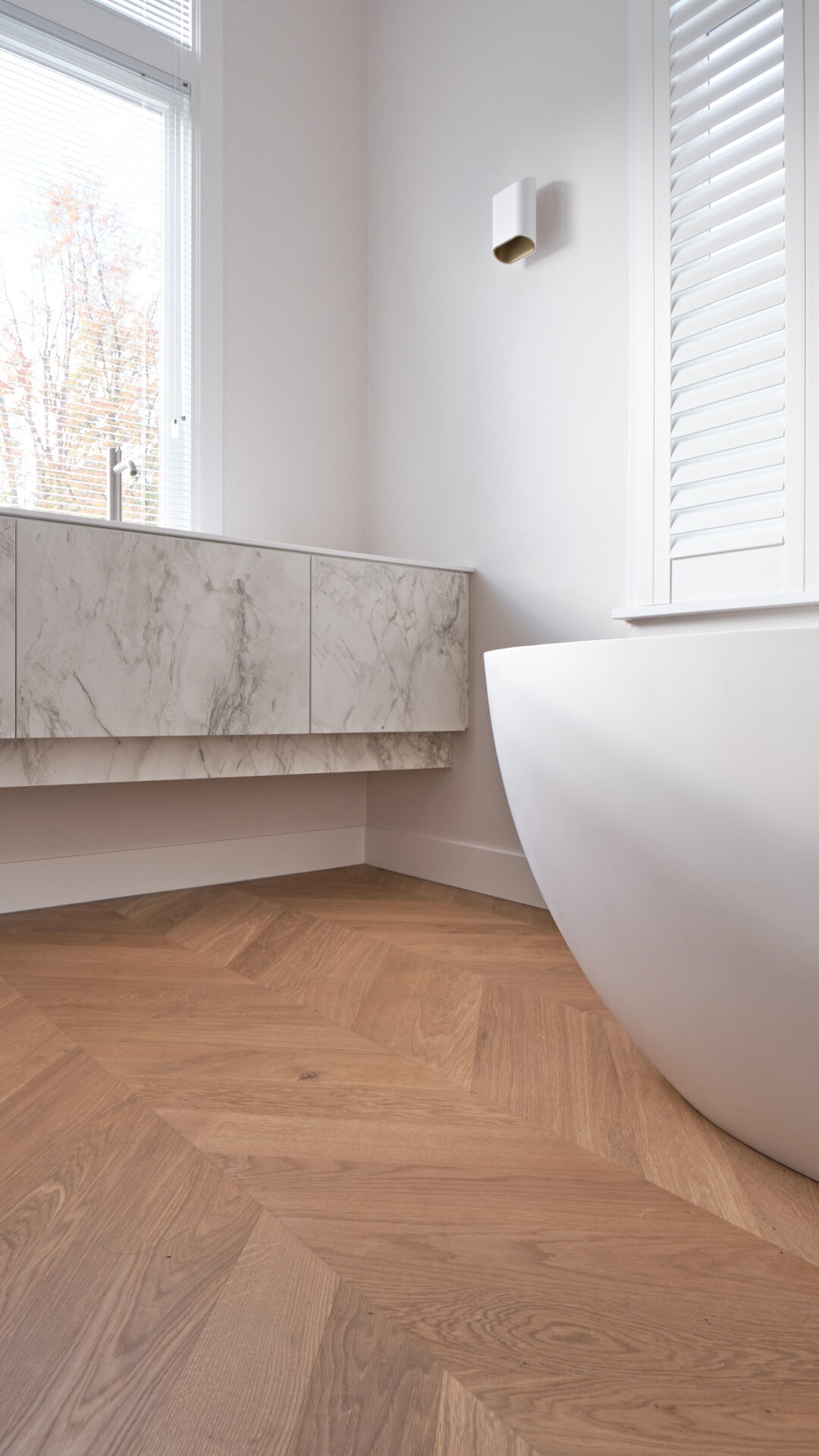
ELECTRIC FLOOR HEATING AND WOODEN FLOORS
In principle, electric underfloor heating can be combined with all kinds of floor coverings, such as laminate, wooden floors, tiles, cast floors and PVC. Each type of floor covering has its advantages and disadvantages. Since Uipkes is a specialist in wooden floors, we provide a number of tips below.
Electric underfloor heating can be installed under wooden floors , but there are some important considerations to keep in mind.
Wood is a natural material that is sensitive to temperature changes and moisture. When installing electric underfloor heating under wooden floors, it is important to choose the right type of wood that is suitable for this application. A durable wood specie such as oak is generally more suitable because oak floors are less sensitive to shrinkage, expansion and warping due to temperature changes. Laminated parquet is a layered floor with a top layer of solid oak. The lower layers are made of cross-glued birch plywood, making the floor even more resistant to temperature fluctuations.
Although electric underfloor heating under wooden floors can provide comfort and warmth, it is essential to carefully regulate the heating and monitor the humidity in the room to prevent damage to the floor and underfloor heating . This applies not only to wood, but to all floor coverings.
Water-based underfloor heating as an alternative for large spaces
Water-based underfloor heating offers an alternative to electric underfloor heating , with specific advantages that are especially effective in large spaces. Unlike electrical systems, water-based underfloor heating uses hot water circulating through pipes under the floor to deliver heat to the room. This method can be generally more efficient, especially when heating larger spaces, although the installation process is more complex and the initial costs are often higher.
Water-based underfloor heating systems can be roughly divided into two categories: dry construction and wet construction . With dry construction systems, the underfloor heating system is installed on the existing floor, usually directly under the finished floor such as tiles or laminate. This method uses insulation boards with pipes through which hot water flows. Dry construction systems generally have a low construction height, which makes them suitable for renovation projects in which raising the floor is not desirable.
On the other hand, wet construction systems involves embedding underfloor heating elements directly into the screed during the construction or renovation of a home. This is often done using plastic binders that hold the pipes in place while the screed is poured. Wet construction systems usually have a higher heat output than dry construction systems, making them more suitable for new construction projects that require a higher heating capacity.
The choice between dry construction and wet construction depends on various factors, including the existing floor construction, the heat requirements of the room and the preferences of the user. It is essential to carefully weigh the pros and cons of each system when planning an underfloor heating system, especially in large spaces where the efficiency and performance of the system is critical.
Conclusion
Electric underfloor heating offers a number of benefits, including even heat distribution, fast heat-up time, individual temperature control and aesthetic benefits such as the lack of visible radiators. However, it also has disadvantages, such as higher operating costs, no cooling option and limited efficiency in large spaces.
Choosing the right heating system is not an easy decision. There is no universal solution that works for everyone. It is essential to choose a system that perfectly suits your specific needs, budget and living environment.
Uipkes specializes in the installation of various underfloor heating systems and the laying of beautiful wooden floors. But that's not all we do. We can also take care of all additional work, such as removing old floors and installing insulation. Because there are so many options and every living situation is different, we recommend that you visit our showroom. Here we can inform and advise you extensively about the best options for your situation.
This way we ensure that you not only experience comfortable warmth in the short term, but also benefit from an efficient and sustainable heating solution in the long term.
Bezoek De Showroom
Veelgestelde Vragen
What are the advantages of electric underfloor heating compared to traditional radiators?
Electric underfloor heating offers advantages such as efficient heat distribution without cold spots, space savings due to the absence of radiators, individual room control for energy savings, fast response time and no air circulation, which is beneficial for people with allergies. In addition, it requires little to no maintenance and integrates efficiently with solar panels for lower running costs.
Is electric underfloor heating suitable as main heating for large spaces?
Electric underfloor heating generally performs less efficiently as a main source of heating for large spaces due to its potentially high energy consumption during continuous use. For large rooms with high heat losses, additional heating systems may be required.
What are the costs of installing electric underfloor heating in a bathroom?
The cost of installing electric underfloor heating in a bathroom varies depending on the system chosen and the specific needs of the room. In general, the costs are between €60 and €100 per square meter for the materials, excluding installation costs.
Can electric underfloor heating be combined with wooden floors?
Yes, electric underfloor heating can be combined with wooden floors. However, some important considerations should be kept in mind during installation, such as choosing a suitable wood specie that can withstand temperature changes and moisture, and carefully controlling the heating to avoid damage to the floor.
How long does electric underfloor heating last?
The lifespan of an electric underfloor heating depends on several factors, including the quality of the system, installation and maintenance. In general, a properly installed and maintained electric underfloor heating system can last for many years, often up to 20 years or more, comparable to the lifespan of wooden floors.
Blijf op hoogte van nieuws over vloeren en interieur
